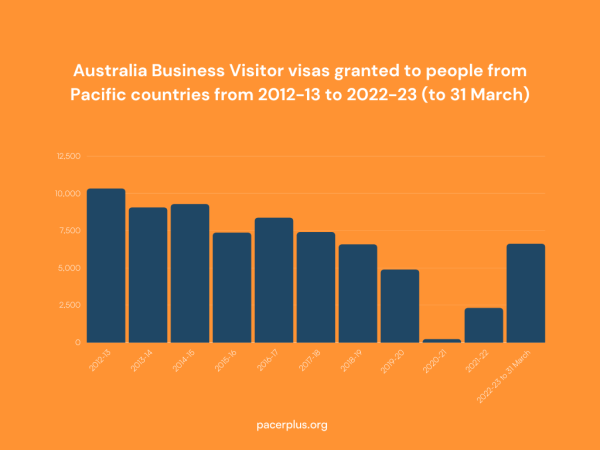Enhancing Pacific Labour Mobility: Pacific-Australia-New Zealand Visa Pathways Study
13 July 2023
APIA, Samoa –The PACER Plus Implementation Unit (PPIU) has recently concluded a comprehensive study to identify alternative visa pathways that can facilitate the movement of semi-skilled and skilled Pacific workers to Australia and New Zealand.
The PACER Plus Agreement recognises the importance of the movement of people to regional economic integration and sustainable development in the Pacific. The Movement of Natural Persons (MNP) Chapter covers the movement of semi-skilled and skilled service providers to facilitate services trade, and the Arrangement on Labour Mobility (ALM), a non-legally binding annex to the PACER Plus Agreement. The ALM provides a framework for regional cooperation to facilitate the movement of Pacific workers to the territories of other participating countries for temporary employment.
Currently, the predominant modality for Pacific labour mobility to Australia and New Zealand is the New Zealand Recognised Employer (RSE) and the Australian Pacific Australia Labour Mobility (PALM) schemes. These schemes are largely focused on low-skilled employment in the Australian and New Zealand horticulture and meat works industries. Pacific countries are also interested in understanding alternative business and temporary employment pathways that can increase development outcomes for their countries. For this reason, the PPIU commissioned the study to capture information on eligibility conditions, verify potential opportunities, understand access constraints, and propose solutions to increase utilisation of these visa pathways by Pacific workers and businesses.
For Australia, the Temporary Skill Shortage (TSS) (subclass 482) visa is the leading temporary work visa. From 2011-12 to 2021-22, only 1,848 TSS workers came from the Pacific, which is exceptionally low in comparison with the top countries for the TSS. The vast majority of the Pacific workers entering Australia on the TSS visa have been from Fiji and Papua New Guinea (PNG), with over 800 visas granted to workers from each country. The top sponsoring industries for Pacific workers on the TSS were 'Mining', 'Other Services', 'Professional, Scientific and Technical', 'Health Care and Social Assistance', 'Manufacturing', and 'Retail Trade'. There has been a reduction in the overall use of this visa by Pacific workers over time.

Australia Business Visitor visas granted to people from Pacific countries from 2012-13 to 2022-23 (to 31 March).
Similarly, the primary temporary worker visa for New Zealand is the Accredited Employer Worker Visa (AEWV) and its predecessor visas that the AEWV subsumed in 2022. From 2013 to 2022, 22,803 workers from Pacific countries were granted an AEWV or one of its predecessor visas. This usage is exceptionally higher than the usage of the Australian TSS visa by Pacific workers and has increased over time, but this difference is driven by the use of AEWV by Fijian citizens, who make up 83.9 per cent of visa holders. The most common occupations taken up by Pacific AEWV visa holders were 'Road and Rail Drivers', 'Automotive and Engineering Trades Workers', 'Farm, Forestry and Garden Workers', 'Construction Trades Workers', and 'Carers and Aides'.
In addition to temporary work visas, Pacific businesspeople can temporarily travel to Australia and New Zealand for limited business purposes on business visas. Between 2012-13 and 2022-23 (until 31 March), Australia granted 72,404 business visitor visas to people from the Pacific. Businesspeople from PNG and Fiji have made the most use of this visa, with 28,474 and 18,352 visits respectively. For New Zealand, 18,378 business visas were issued to Pacific businesspeople between 2013 and 2022. While Pacific business visitors to NZ are significantly lower than Australia, business visitors to New Zealand have been relatively consistent up until 2020. Similar to Australia, most of these visitors came from Fiji (9,684 visits) and PNG (3,033 visits).
The study identified that the constraints currently limiting Pacific access to the temporary employment and business visitor visas cover both systemic constraints and visa-specific constraints. A number of recommendations were provided to address these constraints.
To read the full report titled "Mapping of Visa Pathways for Mode 4 and Semi-Skilled/Skilled Labour Mobility to Australia and New Zealand", please refer to www.pacerplus.org or click here.
-END-
Subscribe today
Don't miss our latest updates and news about PACER Plus